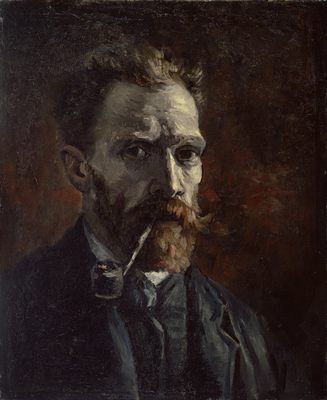About
The death of Vincent van Gogh in the early morning of July 29, 1890 has always been, and still is after more than 120 years, subject to speculation. Did the troubled painter kill himself or was he shot? While the answer to this question may never be known, the room where his mysterious death occurred, at Auberge Ravoux in Auvers-sur-Oise, France, has remained untouched and unchanged ever since.
Van Gogh rented the small room after a long struggle with his mental health and a year spent in an asylum. In the first weeks of his stay he expressed concern in letters to his friends and family about his mental state. But then the tone of the letters changed, and Van Gogh wrote to a relative that he had completely recovered and made plans for the future and new projects. Right before he died, his letters become more gloomy again.
On July 27, 1890, the artist left his boarding house after breakfast with his painting equipment. The Ravoux family, knowing that Van Gogh was a man of routine, started to worry about him when he did not return by dusk. Around nine o'clock that evening van Gogh returned to the inn seemingly ill. When the inn keeper checked on his guest, Van Gogh showed him a gunshot wound in his stomach and explained that he tried to kill himself. The doctor, who came later, did not stay very long and declared that nothing could be done.
Van Gogh's brother, Theo, was called to the scene and arrived the next afternoon and stayed with his brother until the end. Van Gogh told his brother, too, that he tried to kill himself. It is a sentence uttered to the police that makes some people suspicious to this day: "My body is mine and I am free to do what I want with it. Do not accuse anybody, it is I that wished to commit suicide."
In a biography of Van Gogh published in 2011, authors Steven Naifeh and Gregory White Smith question the suicide story. They claim that it is much more possible that somebody shot Van Gogh. They are not the first to think so. As proof they point to the plans for new projects that Van Gogh announced only days before he died, plus the angle that the bullet entered the body. They also question how a man so badly wounded could walk the mile from where he said he was to the inn, and they point out that Van Gogh's painting equipment was never found. Making matters more curious, a French businessman admitted in 1956 that he bullied Van Gogh on that day, but said he did not kill him.
Whatever was the reason, Vincent van Gogh, the ingenious painter of, despite his troubled soul, remarkably peaceful and harmonious paintings, died of a gunshot wound, around 1:30 in the morning in his room at the Auberge Ravoux, at the age of 37. During his short time in Auvers-sur-Oise Van Gogh painted around 70 paintings, inspired by the small town and it's surroundings. You can visit the inn today, which has also not changed it's interior since Van Gogh's fateful stay.
Related Tags
Know Before You Go
The room where Vincent van Gogh died can be visited from the beginning of March to the end of October, Wednesdays to Sundays from 10 a.m. to 6 p.m.
Entrance fees: Adults: 7.00 € Children 12 to 17 years: 5.00 € Children under 12: free a guided tour of 30 minutes can be attended for the same price.
Published
November 3, 2016
Sources
- https://sankalpplacementconsultancy.wordpress.com/2017/10/05/hire-a-good-staffing-solution-services-to-build-a-team-of-quality-employees
- http://sankalpplacement.webs.com/apps/blog/show/44821053-hire-a-good-staffing-solution-services-to-build-a-team-of-quality-employees
- https://storify.com/sankalpplace/hire-a-good-staffing-solution-services-to-build-a-











































